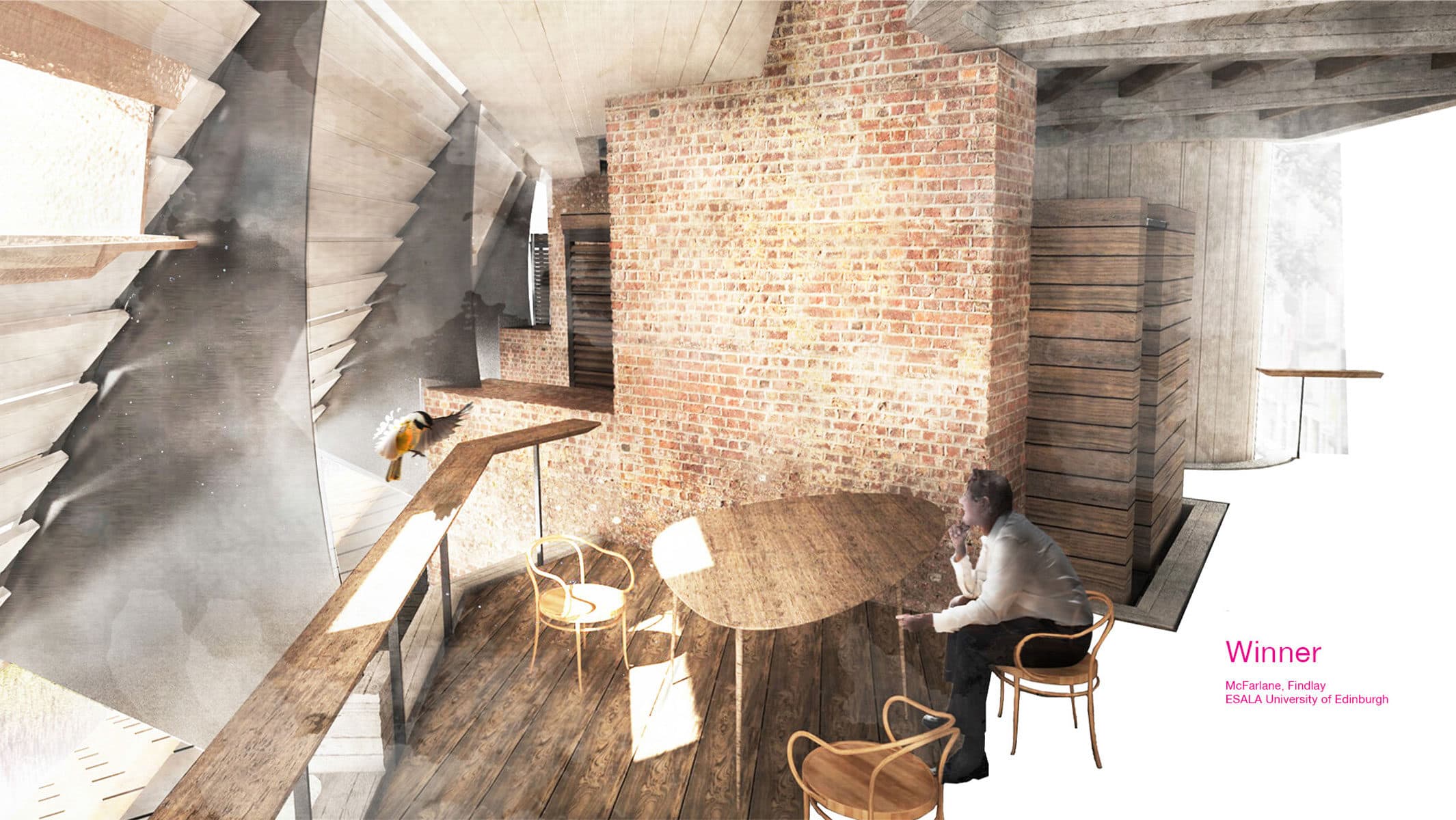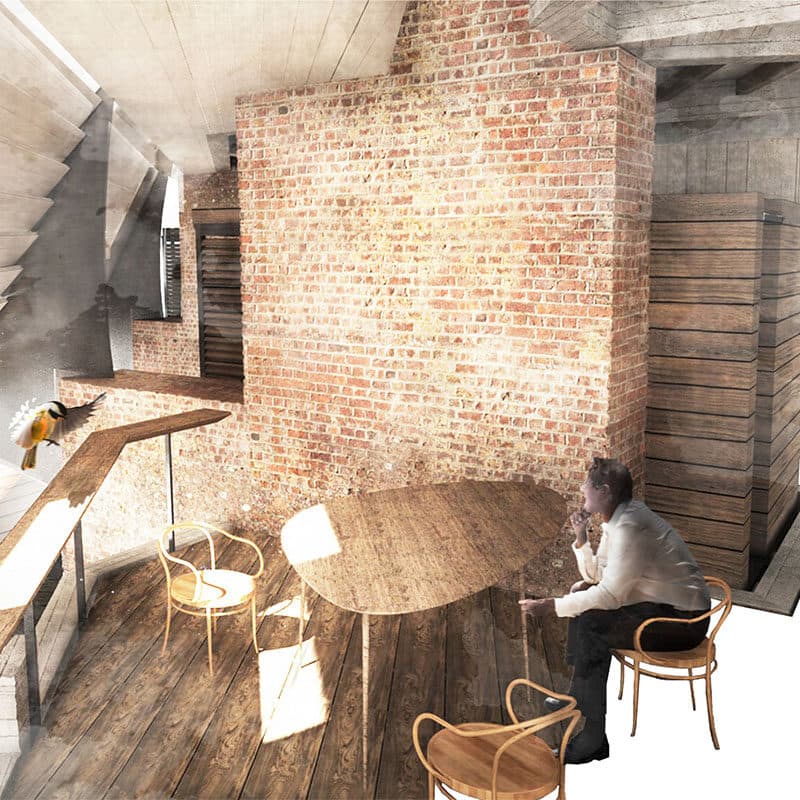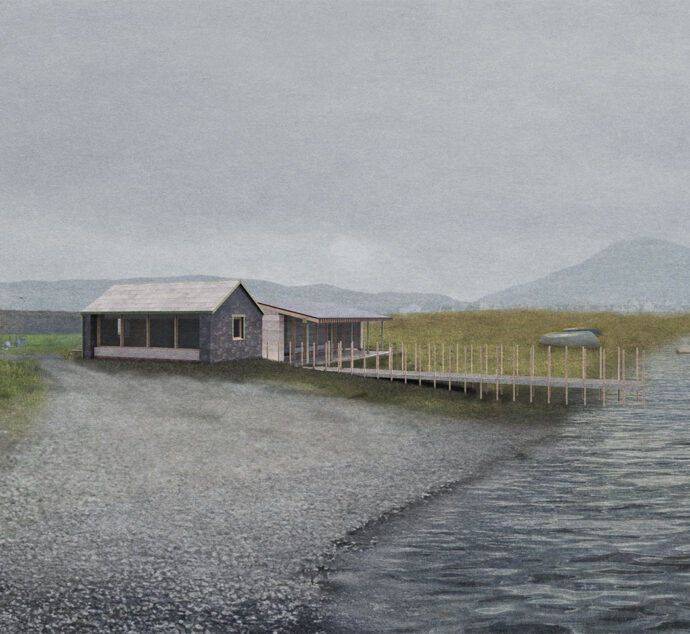ESALA University of Edinburgh, tops the UK’s best schools again in 3DReid’s 14th Student Prize
This year’s winner of the £1,000 3DReid Student Prize is ESALA Edinburgh School of Architecture graduate Findlay McFarlane for his ‘Blotting Ornithologics – The Calcutta Institute of Aviculture’. Competing against 5 other entries, Findlay won for the depth of his analysis and investigation which informed a creative and playful building. His permeable building reacts to the climate in Calcutta responding rather than fighting the environmental challenges of monsoons and flooding. His building welcomes both avian life and people in its many layered spaces.
Runner up was awarded to Carolyn Smith from the University of Cambridge with her in depth analysis and proposal for a new district in Venice.
In total 27 schools nominated students in this year’s event.

The 6 students shortlisted and shown above were (left to right):
- Duzdabanian, Charles – Kingston School of Art
- Hutchings, Mark – University of Lincoln
- Fernandez, Charles – Northumbria University
- Smith, Carolyn – University of Cambridge (Runner Up)
- McFarlane, Findlay – ESALA University of Edinburgh (Winner)
- Whittaker, Jennifer – Queens University Belfast
The judging took place in our London office where our colleagues were fortunate to be joined by Stuart Black from Summix, Chris Foges from Architecture Today and Alison Crofton from Redrow.

Findlay McFarlane’s winning entry:
BLOTTING ORNITHOLOGICS: THE CALCUTTA INSTITUTE OF AVICULTURE
A bird doesn’t see an aerial view of a city. It sees an intrinsically biological landscape. It sees where it can exist and where it cannot. It can no longer exist in Kolkata as it has become, but instead demands the ecology of what Calcutta was, a new patterning of co-existence and architecture as mediator in an “Ocean of Wetness”.
Blotting Ornithologics saturates conventional design methods to release the wet, public ground from the private, flawed dryness of figured black. The project harnesses the avicultural wisdom found in Satyacharan Laha’s Pet Birds of Bengal (1923), prioritising the logics of the bird to challenge human lines of territory between city and jungle, and bring back the fuller ecology of the wetlands to Kolkata. Architecture negotiates the requirements of species, the blur between wet and dry, and the high water table which makes land a mere illusion – something modern Kolkata ignores while rising sea levels flood the flat concrete city.
The “migration” of Laha’s species from his Agrapara aviary to sites throughout the city triggers the reintroduction of wetness, inserting white, public blots back into the black figure ground plan between the overlapping layers of ornithological species requirements, to form new “blotscapes” within “birdscapes” within the Ocean of Wetness.
These blots are at once created and sustained by strategically placed, newly conceived blotting instruments. The Oriental Skylark is embodied in this School of Ornithology, and along with the supporting programmes of the Blue Whistling Thrush and the Common Iora, the institute negotiates territories using senses specific to each species and draws in wetness from surrounding water systems. They form infiltration basins which slow water down and soak it away to alleviate runoff, while creating public landscapes from which the environmental and structural cores of the architecture rise. Through the oscillation of wet and dry seasons, each territory becomes increasingly inhabitable to its chosen species, until even the densest parts of the city bloom with that which once made them home to not just us.
Open envelopes provide shade, rain cover and air movement, creating outside buildings which hold moments of environmental control, all drawn in different ways from the wetness below and all around. The permeability of the facade embodies an essential attitude to Calcutta as an Ocean of Wetness: there is no clear line between wet and dry, and at all scales these Ornithologics work with, not against, the omnipresent moisture.










